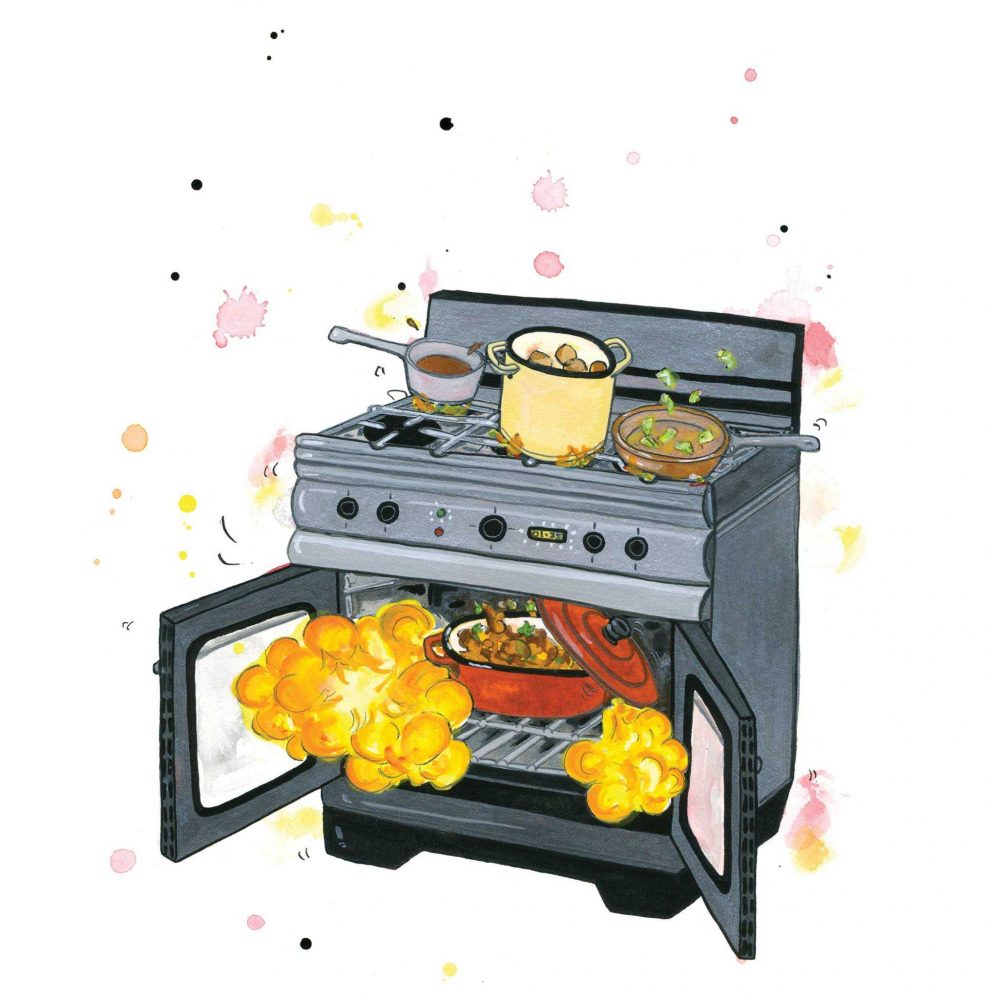Welcome to Milk Street Mysteries. Each month, we'll pick one reader-submitted mystery to pose to all of you, and we'll challenge you to give us the explanation. Send us your cooking conundrums here, and look out for the monthly #MilkStreetMystery on Facebook, Twitter, Instagram and in your inbox.
Without further ado, here's the first Milk Street Mystery, along with the answer. Next month it's your turn to crack the case!
The Mystery
Last fall I got a new kitchen range. I really loved it—until Christmas Eve. A leg of lamb had been roasting for two hours in a Dutch oven at 300ºF. Suddenly, the oven door flew open with a bang and a huge fireball. It went out right away and nobody got hurt. A technician came to look at the oven and said lamb is known for releasing gases and exploding every now and then. Have you ever heard of this? — Elke Hagge, Hazelhurst, Wisconsin
The Explanation
The idea that a roasting leg of lamb could produce flammable gasses seemed, well, preposterous. Until we Googled “exploding leg of lamb” and found a similar story by Nigella Lawson. She credited the experience to a faulty cooker.
So we dug deeper and spoke to Elke, who said she cooked the lamb using a full bottle of red wine. At first, we didn’t think that was significant. Since most wine is roughly 12 percent alcohol, combustion seemed unlikely. But we dug deeper and realized that alcohol boils at a lower temperature than water (173ºF versus 212ºF). Things were starting to make sense.
As her lamb roasted, alcohol vapors slowly escaped the Dutch oven, rising to the top of the oven. Since ovens cycle off and on, once the alcohol vapors reached a sufficient concentration, they easily ignited the next time the heating element came on. To avoid this, start the dish on the stovetop at a very low simmer, reducing the wine by about three-quarters. This should allow the alcohol to mostly cook off (you likely will need to replace the liquid with water or stock before moving the pot into the oven).




